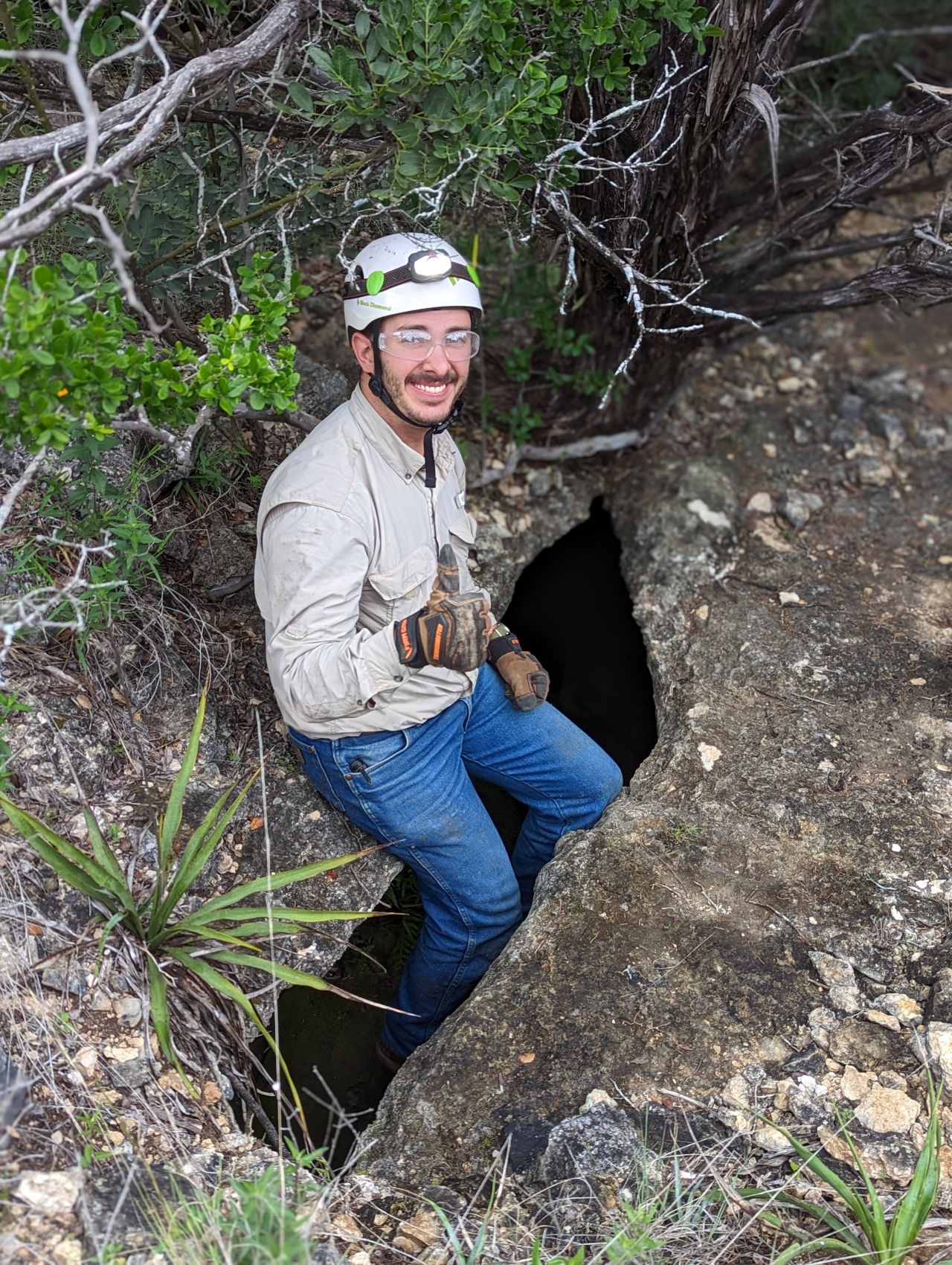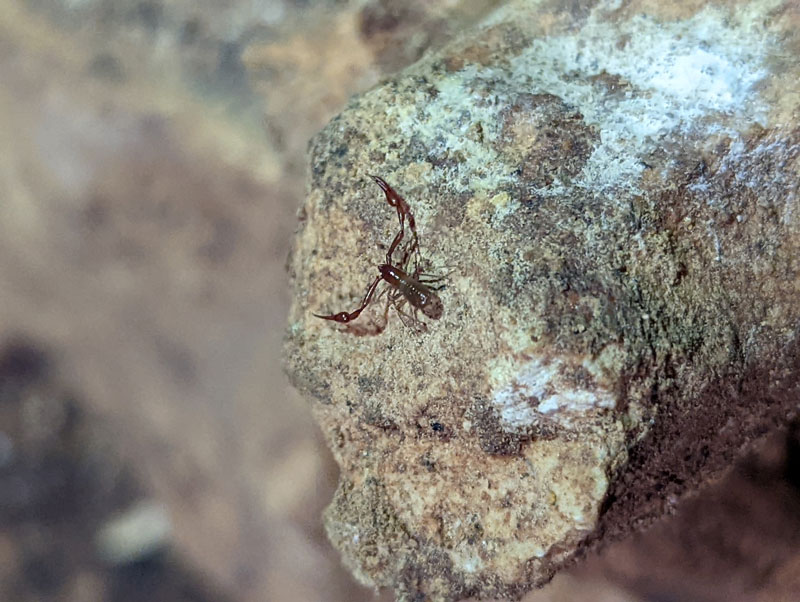What Actually Is a Karst Region?

When I first joined the engineering and architecture industry, I knew that I would be exposed to a world beyond my wildest dreams. I didn’t expect, however, to learn just how far our industry reaches, even deep in the heart of Texas. Texas is home to more than 15,000 documented caves, sinkholes and springs, and more than two million Texans rely on groundwater stored in karst aquifers as their sole water supply. If you’re like me, you’re probably wondering what a karst region is, and why they’re so impactful. Stay tuned as we dive deep (literally) into the world of caves, sinkholes and other dissolvable bedrock called karst.
So…What Actually are Karst Regions?
After I first Googled karst regions, I’ll admit, I was lost. According to the National Park Service, karst is the kind of topography formed from the dissolution of soluble bedrock like limestone, dolomite, or other carbonate rock materials. Karst landscapes may have deep bedrock fractures, caves, disappearing streams, springs, or sinkholes, and these features can be isolated or occur in clusters, and may be open, covered, buried, or partially filled with soil, field stones, vegetation, water, or other miscellaneous debris.
Water dissolves rock. Holes form caves. Got it. But I still didn’t understand exactly why these regions are so important, and what they mean for our Natural Resource team.
Karst Regions in Texas

To learn more about karst regions, I spoke with Nicholas Gladstone, MS, Environmental Assistant Project Manager in our Austin, TX office. Texas, like a lot of the United States, is characterized by karst topography, and in turn, a host of animals that have adapted to live exclusively in these subterranean conditions. Unlike most of the United States, Texas is the only state to recognize 15 invertebrate species (karst invertebrates)as federally endangered. Concentrated in Central Texas, these species include beetles, spiders, and even pseudoscorpions. The U.S. Fish and Wildlife Service (USFWS) protects these species under the Endangered Species Act, and any activity resulting in the disturbance or destruction of their habitat is in violation of federal law.
 To my surprise, I learned that you need a special license to work with these species, and Gladstone is one of 13 surveyors in the entire United States who is permitted to do so. and has conducted hundreds of cave surveys across Tennessee, Georgia, Alabama, Kentucky, Virginia, and Texas. He, along with Roman Pineda, PG, Environmental Senior Project Manager in our San Antonio office, who has been doing these types of surveys for more than 20 years, and other members of the Natural Resources team, work alongside colleagues to ensure state and federal environmental compliance.
To my surprise, I learned that you need a special license to work with these species, and Gladstone is one of 13 surveyors in the entire United States who is permitted to do so. and has conducted hundreds of cave surveys across Tennessee, Georgia, Alabama, Kentucky, Virginia, and Texas. He, along with Roman Pineda, PG, Environmental Senior Project Manager in our San Antonio office, who has been doing these types of surveys for more than 20 years, and other members of the Natural Resources team, work alongside colleagues to ensure state and federal environmental compliance.
The Science Behind It
The services we provide are twofold, Gladstone explained: geologic and biological investigations. Specifically referencing the Edwards Aquifer in South-Central Texas, which is one of the most productive aquifers in the United States, he mentioned the guidelines and regulatory policies related to how to protect the drinking water that’s sourced from the aquifer. In referencing an ongoing project, he mentioned, “We have identified solution cavities or what we call karst features on a person’s property that may be subject to proposed development. We have to make sure that if they’re above the recharge zone [of the aquifer], they maintain certain protective buffers, and other mitigatory offsets to the presence of these areas to adhere to state laws. As storm water rushes in, it will drain right into the sink holes, cavities or caves, and then it’ll feed right back into the aquifer, and that’s what everyone’s drinking. We want to enforce the protection and regulation of those types of features.”
 The other side of it is the biology aspect. When a cave or cavity is found on a property, there are a series of surveys to assess the presence of a species. As caves can come in many different shapes and sizes, Gladstone is trained to navigate many types of systems, sometimes requiring vertical rappelling or fully prone crawling to reach areas of the cave with potential habitat for federally listed species. Should surveys confirm the presence of an endangered karst invertebrate, there can often be subsequent federal consultation with USFWS or coordination with regional Habitat Conservation Plans (HCPs) to come up with a game plan of how to potentially offset the impact to both the caves and their inhabitants.
The other side of it is the biology aspect. When a cave or cavity is found on a property, there are a series of surveys to assess the presence of a species. As caves can come in many different shapes and sizes, Gladstone is trained to navigate many types of systems, sometimes requiring vertical rappelling or fully prone crawling to reach areas of the cave with potential habitat for federally listed species. Should surveys confirm the presence of an endangered karst invertebrate, there can often be subsequent federal consultation with USFWS or coordination with regional Habitat Conservation Plans (HCPs) to come up with a game plan of how to potentially offset the impact to both the caves and their inhabitants.
How Do We Do It?
One might ask, well how do you know how big a cave, or an opening in the ground is? Geologic assessments, downhill cameras, risk excavation monitors, as well as ground penetrating radar are just a few ways the team surveys cavities to figure out the size or extent of a passage. Although you can often detect a cavity and determine it extends further down, you might not be able to map the entire passage given the restrictive access into the bedrock. However, Gladstone can sometimes get far enough in to put bait traps or other monitors in there to assess for potential species presence.
After that, it’s an assessment of “is it worth it to break open that entrance further and dig into the actual bedrock, potentially destroying the entire system altogether.” From then on, it’s usually a matter of what USFWS says. What species are around that area? How sensitive is that area? Is there a ton of development around it? These are all factors that inform what next steps.
To Texas…and Beyond!
“If you’re building in other karst regions like Florida, for example, we can help do karst evaluations. It’s not just a Texas thing, it’s expanding,” shared Gladstone. While Texas is the only state with as many federally listed species that live in underground, there are currently groundwater ordinances and karst management guidelines throughout many other states, including Florida, West Virginia, Tennessee, Alabama, Georgia and Kentucky. “Our expertise transcends Texas,” he says, “because karst systems exist across the country.” He predicts that in the next few years, there will be an increase in the listing status of several species currently under review, and when that happens, the need for consultants who work with caves and these protected species will increase too.
Thank you again to Nicholas Gladstone for teaching me about the world of karst regions, and how we can look beyond Texas to explore these types of surveys! I’ll talk to you next time to ask, “What Actually Is?”
